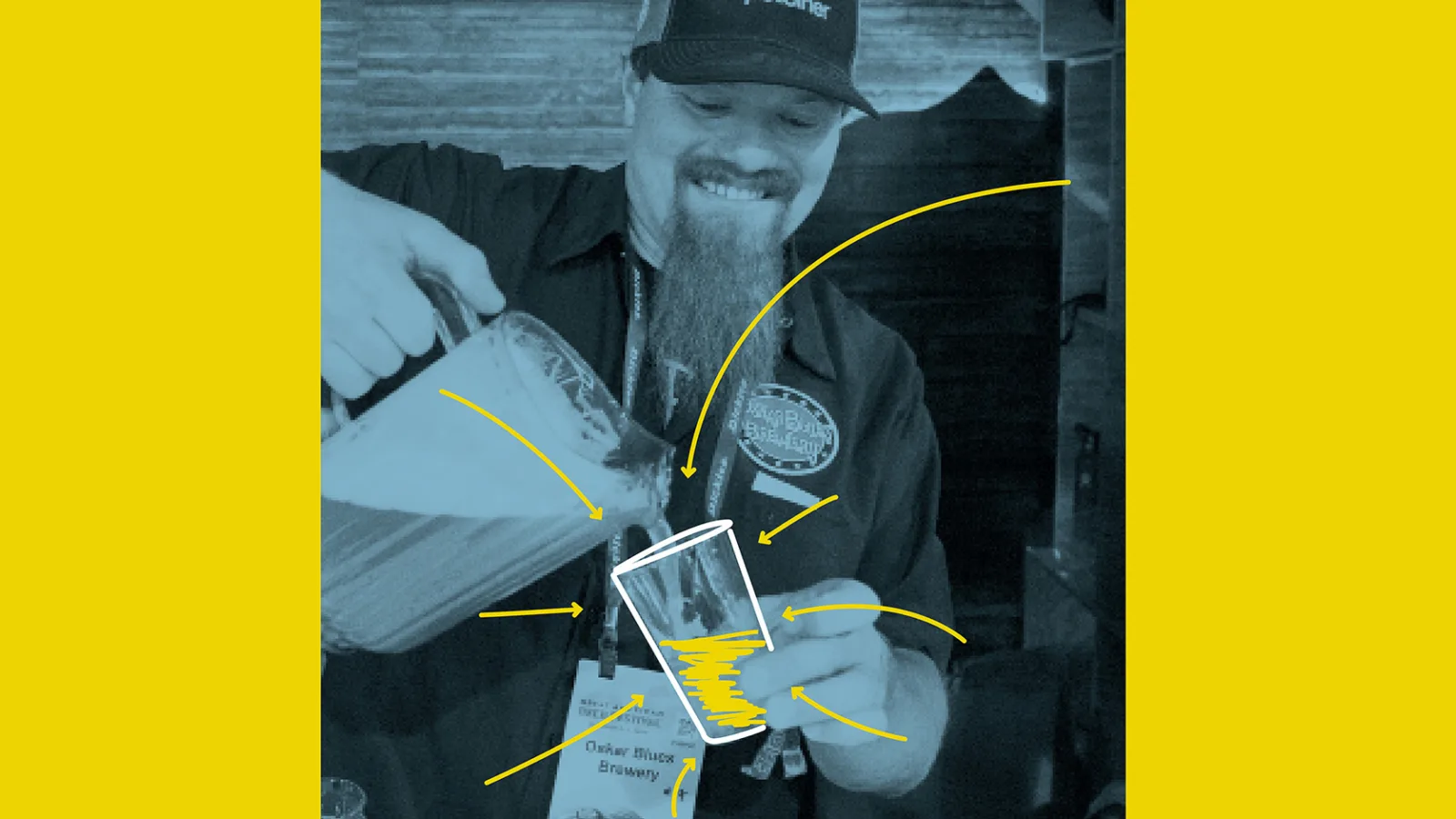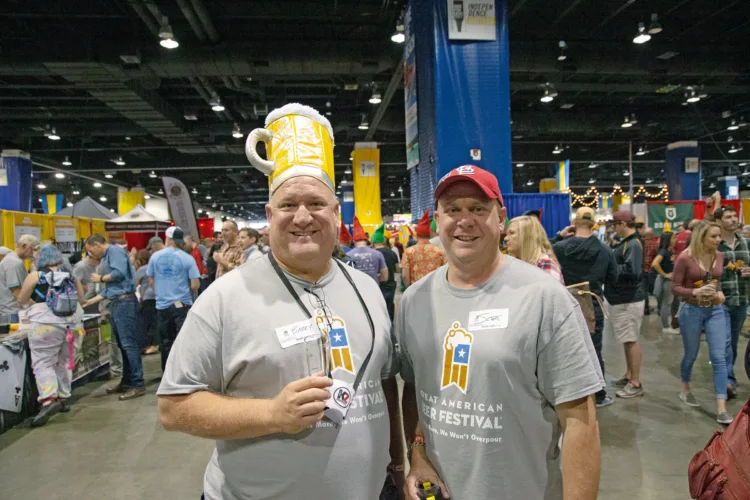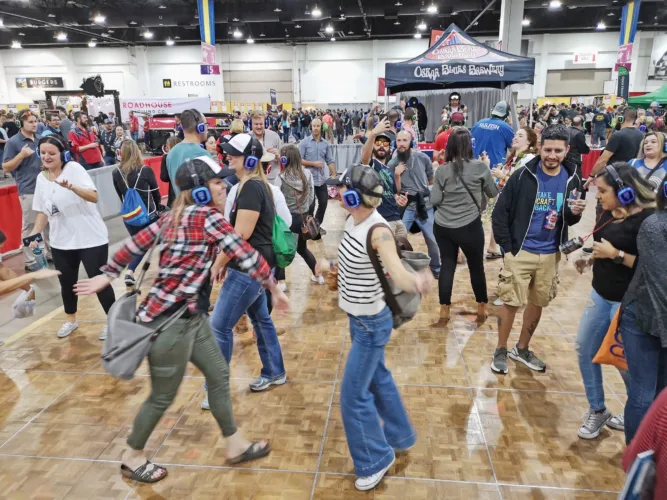
Small glasses - big impact
Every year craft brewers and their fans from all over the United States of America convene in Denver for a festival of mutual appreciation. For three days plenty of new and traditional brews flow into the small tasting glasses expertly wielded by the around 60,000 visitors.
It’s like entering a bee hive when you walk into the enormous hall on the second floor of the Colorado Convention Center. This is where the Great American Beer Festival (GABF) is held and the venue is positively pulsating with thousands of people intent on pursuing a common goal; they all want to try the beers – both the conventional and the offbeat – being touted by breweries from each of the USA’s 50 states. Together with your ticket for one of the four-hour sampling sessions you’re handed a small glass, into which the various brewers fill one ounce of beer – at least this is the theory but nobody seems to take the measure too literally. In joyous anticipation of their first sample sip craft beer fans often form long lines at the booths and slip into talking shop with their fellow aficionados. The chorus of voices is thus correspondingly loud – and only gets louder the longer the session lasts.

Helpers guide people to the entrance at the massive Colorado Convention Center.
A festival with tradition
The GABF has been staged for 38 years now. It was founded by Charlie Papazian, heralded in the USA as the father of homebrewing and revered by the worldwide craft beer scene as an absolute pioneer. With the publication of his book “The Complete Joy of Homebrewing”, which has sold over 1.3 million copies, Papazian forever changed our attitude to beer, making knowledge of the brewing ingredients required and the method used accessible to a wide audience. “When we held our first festival in 1982 in a small hotel in Boulder, Colorado, 22 breweries took part. Variety, choice – we’d had neither here until the 1970s. Many people didn’t even know what hops or yeast were and only drank the beer they’d seen on TV commercials,” he remembers. “The world of beer has radically changed since then: today more and more beer drinkers are interested in what’s in their favorite brew and they want to talk about it. They enjoy the full range on offer.” A total of 800 brewers now participate in the GABF, with their creations enticing over 60,000 thirsty men and women to Denver for the three days of the show.
On the Saturday afternoon at midday the members only session starts which is reserved for members of the Brewers Association and special guests. We’ve arranged to meet Logan Wiley who’s come from Wyoming especially for the event. His interest in the festival isn’t entirely private, for as regional service manager for KHS the 31-year-old meets many ‘old friends’ here who fill their products on systems built by the Dortmund systems supplier and its American subsidiary. He started working at KHS four years ago as an engineer tasked with installing fillers. He’s now the first point of contact in Service for the US West Coast when customers have technical issues or need spare parts. Although breweries are not his only clients – he also supports the multinational soft drinks producers – he’s a big fan of craft beer and proven expert in this field.
Mainstream craft
“The number of breweries in the USA has really exploded in the last few years – even in regions which are less heavily populated,” he explains. He’s also noticing a change. “For a long time craft beer was a rebellion against the light American lagers sold by the big industrial breweries. Besides variants with a strong hoppy or malty note cask-conditioned ales, milk stouts and fruit beers were produced, distinguished by their great variety of flavors. Owing to the increase in health awareness there’s now a growing demand for lighter beers, not only because you can drink more of them but because they’re also particularly good for mixed beer beverages. Craft brewers naturally want to live up to their reputation as pioneers of taste in this segment, too – and to this end are producing unusual and highly aromatic Kölsch beers or lagers.” At the moment some of them are also opening up their portfolios to include products other than beer, he states. These range from soda pop to fermented teas to beverages infused with CBD, the non-psychoactive ingredient of the cannabis flower which is extremely popular in the wellness sector at the moment.
The hall is filling up, with bursts of applause echoing from various corners of the room – we only find out why later. At the Two Roads booth, a brewery from Connecticut, we try a sip of Road 2 Ruin, a very hoppy IPA with 8% alcohol by volume, and learn from Wiley that the company cans it on a KHS can filler.
»More and more beer drinkers are interested in what’s in their beverage and want to talk about it.«

Charlie Papazian, the father of homebrewing and craft beer, founded the festival in 1982, with the first event limited to just 22 exhibitors.
Not one but two awards
One important part of the festival is the GABF competition, in which approximately 8,000 beers in an unbelievable 107 different categories vie for the favor of the prominent jurors from 13 countries throughout the three days of the event. Our next stop, Altstadt Brewery, is very pleased with the two gold medals awarded that very morning to a lager and a Kölsch. As we raise a glass of the latter to one another, Wiley tells us that Altstadt is in Fredericksburg in Texas. The town is a real German colony after immigrants from the Westerwald, fleeing Germany before and after the Revolution of 1848, settled here in the mid-19th century. Just two weeks after our visit to the GABF the brewery was to commission its first small can filler from KHS. “We want to help breweries to develop and grow,” is how Wiley describes KHS’ philosophy with regard to the craft beer scene. “We therefore find it important that they know early on who we are and what we have to offer in the way of process engineering, fillers and labelers. When the need then arises, we’re often already engaged in cooperative talks.”
We continue to nudge our way through the crowd. Many visitors have dressed to suit the occasion; fun and original beer costumes can be spied alongside various examples of folk dress, with the wearers happy to pose for photos. Many have long chains around their necks threaded with salt pretzels – probably to stave off the hunger pangs with all the beer on offer.

Master brewer Hank Myers from the Left Hand Brewing Company outlines the current trends in beer over a glass of anniversary beer.
»We help breweries to develop and grow by talking to them early on.«

KHS regional service manager Logan Wiley expertly guides us from booth to booth, full of infectious enthusiasm.
Nitro a hot favorite
The next booth we visit is manned by the Left Hand Brewing Company from Longmont, Colorado, who are more or less on their local stomping ground. Logan Wiley introduces us to master brewer Hank Myers. “Our big thing at the moment is nitro,” he states. “Like Guinness we use nitrogen to produce an especially creamy, tight head of foam – such as in our Milk Stout Nitro, a real bestseller.” Nitrogen also plays a role in another of Left Hand’s big projects, where beers are brewed in the style of classic cocktails. One example we find extremely convincing in the tasting glass is White Russian Nitro with its notes of coffee, vanilla and chocolate. “It takes a huge amount of effort to produce a beer of this creaminess,” Myers admits. “The real secret is trial and error – and that we take plenty of time in the process.” The brewery itself is also pleased with the result of its experiment; for 2020 Myers is planning a piña colada beer. We can’t wait!
At the end of our session we also find out that applause is not given for a performance of some kind or another but when a visitor drops his or her glass and it smashes on the floor – as if to say “the laugh’s always on the loser”. Logan Wiley, who’s also planning on attending the evening closing session with his girlfriend, knows how great the damage can be here: since none of the brewers wants to take their beer back home with them, this is when the measures poured into the glass become very generous ...











